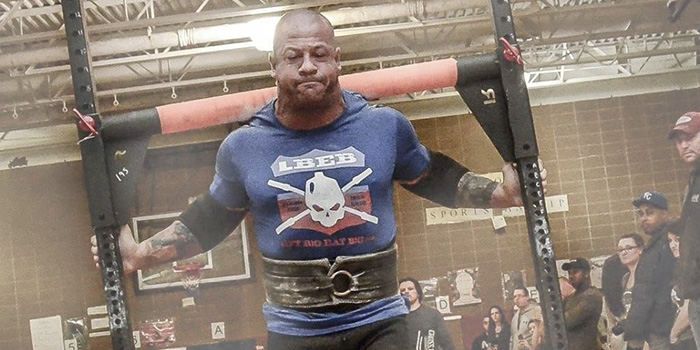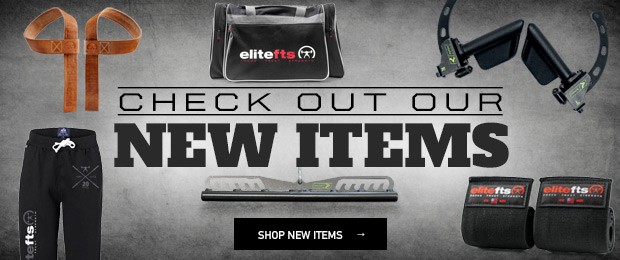
If you plan to stay in the strength sports game for the long term, you have to start training smarter. Hopefully, you learn how to train properly at a younger age rather than when you are older like I did, and I have the scars to prove it. With so much information at your fingertips today, there is no excuse not to follow a well-thought-out program. You have 5th set and 5/3/1 right here, or there are many qualified coaches out there whom you can hire, the keyword here being “qualified.”
RECENT: 12-Week Powerlifting/Strongman Hybrid Program
If you compete in powerlifting or strongman, the lifts and events are going to take a toll on your body, and there’s not a lot you can do about that. You got into competing to see what your body is capable of, and if you are anything like me, you will do anything in the pursuit of strength. With that being said, your accessory work should do three things: bring up your weaknesses, build muscle, and prevent injury. If you’re one of those lifters who just likes to hit the main lift hard and maybe do some tricep pressdowns when you feel like it, trust me—you won’t be around for very long. There’s a reason the average life span in powerlifting is three years. This sport isn’t easy, and I wouldn’t have it any other way. If training were easy, then everyone would be strong and jacked. So, let’s get to it. Here are my top 10 exercises for becoming strong and staying healthy.
1. Log One Motion
I’m counting this as an accessory lift because I like to have it after the main press for strongman even when the log isn’t an upcoming event. Nothing builds your conditioning up like this move while adding muscle to your whole body. Also, what I love about it is that it’s easy on your shoulders. The pop from the hips (done correctly) takes the stress off the shoulders for the lockout. Check out my previous article on the one motion here.
2. Hatfield Squat
I like to think of Hatfields as a full-body squat. These are great for reps after your main squats or during strongman training to take the stress off the knees. I remember a few years back that I had some serious knee pain and was unable to squat, not even a box squat. However, while holding on to the rack, I was able to take the stress off my knees and squat to a full range of motion. In a few short weeks, I was able to squat again pain-free.
3. Kneeling Landmine Press
This press variation taxes your whole body, especially your abdomen. If you are not tight, you will lose balance and will have to drop the weight. It’s joint-friendly because of the angle you press at. For those of you who are not able to do the overhead press, give this a shot so that you can still work your shoulders. And for the strongmen out there, use this as an accessory to your circus dumbbell.
4. Low-Incline Dumbbell Press
I feel that this is a great angle for still hitting your upper chest while not stressing the shoulders. Unfortunately, many people can’t flat-bench, but if you put them at a slight incline, they are able to press pain-free. Just make sure that your scapulas are together and down to protect your shoulders. Dorian Yates was a big believer in training at a low incline, and if you are familiar with how John Meadows trains, he does this as well. Just take a 25, put it under a flat bench, and give it a try.
5. Standing Dumbbell Row
I love any row variation, and they should all be used if you want a big, strong back. I’ve come to like the standing version of the dumbbell row the best, as you can keep your hips square rather than having a knee on the bench. I’ve also learned recently that the more common knee-up puts you more at risk for an inguinal hernia. I’ve had surgery for an inguinal hernia before, and trust me—it’s not fun. So, I’ll do what I can to prevent another one.
6. Kettlebell Press
I love strict pressing a kettlebell, as it’s very comfortable on my wrist, elbow, and shoulder. You start in a neutral position without flaring the elbow out. Tighten your lat up hard so that your elbow sits on it, and press that kettlebell up as you slightly lean away. Then, come back in at lockout. This is another press variation I have used many times with clients who have shoulder pain while overhead pressing but have no issues with pressing a kettlebell using the proper form.
7. Chain Tricep Extensions
Many people experience elbow pain while performing tricep extensions/skull crushers. The pain is usually at the bottom of the movement, where all of the stress is on the joint. Using chains is a great way to lighten the load at the bottom, thus making it easier on the elbow while still working a full range of motion. My favorite is to add a pair of grenades to this.
8. Single-Leg Deadlifts
This is a very humbling movement if you are not used to single-leg work. It works your glutes and hamstrings like crazy while not putting a heavy load on your lower back. If you have constant back issues from deadlifting, I would suggest that you add these in and see how much better you feel. Single-leg work should always be part of your program, as it is very easy to get imbalances. This is an exercise you just can’t cheat on. Start with just one weight in your hands on the leg that goes up, and if you are feeling frisky, you can progress to a barbell.
9. Face Pulls
I’m not going to say much about face pulls, as they have been covered here so many times, so just do them—and lots of them.
10. Sled Work
Pushing or pulling a sled can simultaneously build leg size and improve conditioning. I like to rotate how I use a sled, but nothing beats the prowler. Find an open area, and push it on the high handles, then bring it back on the unforgiving low handles. The great thing about sled work is that it doesn’t make you sore, as it’s only the concentric portion of the lift. It also increases blood flow, which improves recovery.











Very informative article, thank you for sharing!
Jordan